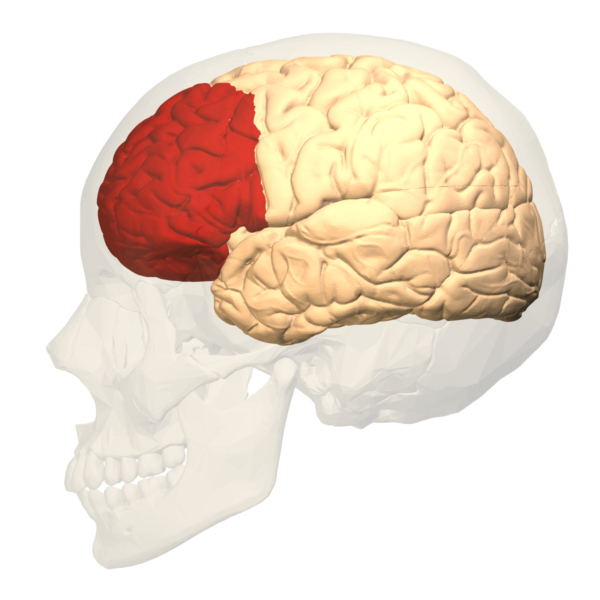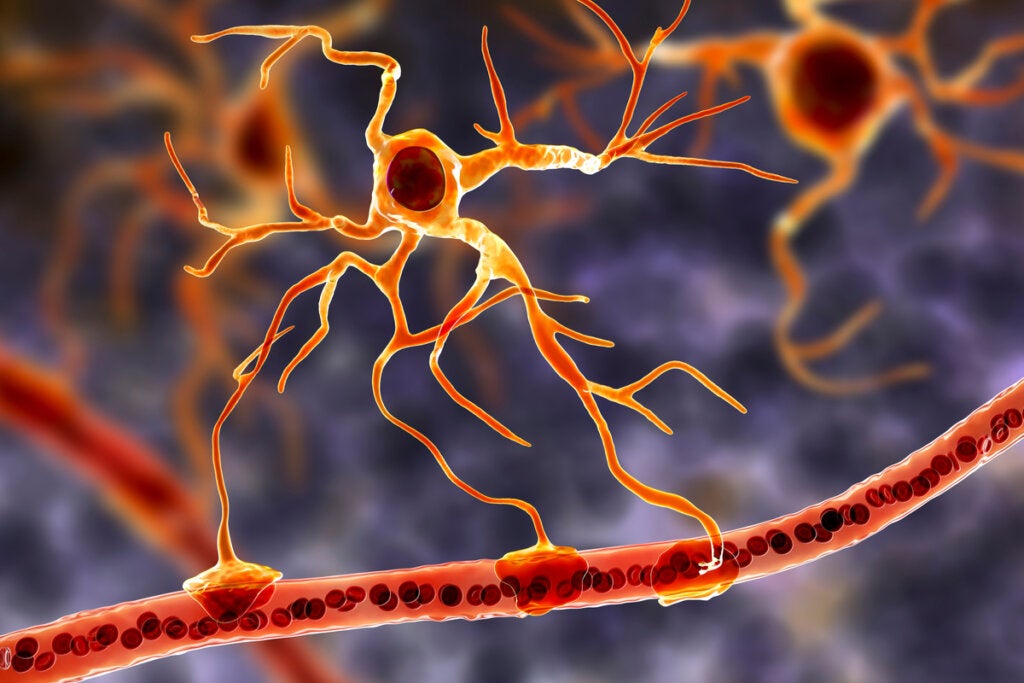Today’s article is about the frontal lobe. Before we begin, you must know that that lobes separate by the division of the cerebral cortex. This division happens according to the role each of these plays in the different processes and their location. For instance, the lobes would be sort of like continents if the brain was the Earth.
This classification is quite functional, as it serves as a map to easily locate certain points along with the brain. The cerebral cortex has six functional lobes: frontal, parietal, occipital, temporal, insular, and limbic. The frontal lobe occupies one-third of the cerebral cortex.
“Biology gives you a brain. Life turns it into a mind.”
-Jeffrey Eugenides-
Structure and functions of the frontal lobe
The frontal lobe is in the most anterior part of the brain, specifically the entire cerebral cortex starting from the central sulcus. It’s an important part because it performs central functions in information processing. Some particularly relevant ones are those with an executive character. It divides into multiple regions that provide it with a great variety of functions.
One can speak of two large territories when grouping the different functional structures of the lobe. One of them is the territory corresponding to the motor cortex, which fulfills motor functions. The other territory is the prefrontal cortex, which is in charge of executive processes, decision making, and different things related to emotion regulation.
Arendo, Bembibre, and Triviño (2012) highlight the importance of the frontal lobe, stating it connects to practically all areas of the brain. The authors report that this area processes “information of a cognitive, motivational, and emotional nature and use it to drive the individual’s behavior towards the achievement of their goals”. Thus, you’re able to design plans, select them, and coordinate the best cognitive strategies to carry them out thanks to your frontal lobe.
The motor cortex of the frontal lobe
This is the manager of the body’s effector systems. Thanks to it, you can perform all types of voluntary motor acts. This structure is in charge of both planning the movement and transmitting the orders to the muscles so that they can start. Furthermore, note that this cortex is only in charge of voluntary movements. In fact, the involuntary motor system is present in other structures, such as the basal ganglia and the cerebellum.
There are three areas of relevant mention within the motor cortex:
- The premotor area is in charge of planning and programming movements. These neurons are in charge of establishing the muscles and steps necessary to move correctly before even moving.
- The primary motor cortex is in charge of executing the scripts prepared by the premotor cortex. In other words, it’s in charge of triggering the movement action and sending the orders to the muscles.
- Broca’s area is in charge of language production and its function is to coordinate the phonological muscles so that the subject can speak and pronounce. It’s also involved in the process of writing.
Prefrontal cortex
This region contains the executive system and information processor of the human brain. The prefrontal cortex of the frontal lobe is ultimately responsible for cognition, behavior, and emotional response. It mediates between many other structures throughout the brain, playing a key role in decision-making.

It isn’t superfluous to explain that executive functions are a set of higher-order cognitive abilities, which control human behavior and emotions. In other words, one could describe all those processes in charge of managing, organizing, coordinating, and directing as similar to a computer processor.
Three major regions of the prefrontal cortex
- The dorsolateral frontal cortex (DLFC) is connected to regions of other lobes and transforms thought into plans, behaviors, and decisions. It’s closely related to higher psychological processes, such as working memory, metacognition, attentional control, cognitive flexibility, etc. Burguess (2012) lists the main functions of this area: attention, memory (working and declarative), language, and temporal preparation and sequencing.
- The function of the cingulate area is related to the regulation of motivational processes. It’s in charge of inhibiting or inciting the individual to action. Moreover, it’s also in charge of certain processes related to the regulation and sustaining of attention.
- The orbitofrontal cortex is in charge of controlling affectivity and social behavior. It’s also involved in the processing and regulation of emotions and affective states, adapting behavior according to the context. Also, it receives information from all sensory modalities. Lesions in this area can affect olfaction (anosmia), as highlighted by Arnedo, Bebibre, and Triviño (2012).
Finally, the frontal lobe is one of the most relevant structures within the brain. Its study through various neuroscientific techniques provides valuable information: understanding its structure and functionality brings humans closer to understanding our biology and gives clues about its relationship to behaviors, emotions, and thoughts.
The post Description and Characteristics of the Frontal Lobe appeared first on Exploring your mind.


















Comments